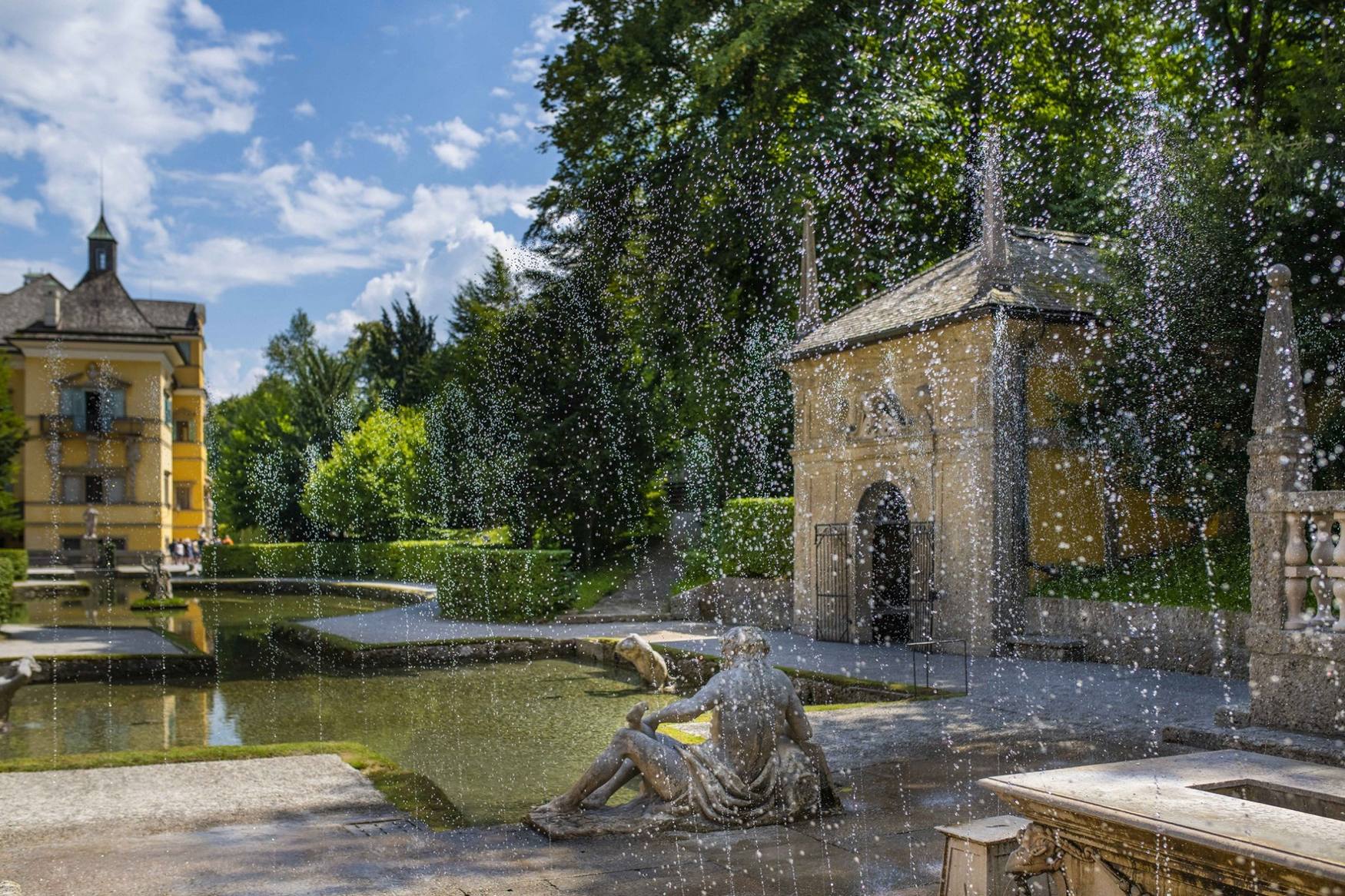There's a reason why Hellbrunn Palace is so popular: it hosts a number of international events every year (including some of the highest calibre) and is also home to the Salzburg Zoo. Hellbrunn is very easy to get to: it's just 6 km south of Salzburg and you'll find yourself in a medieval fairytale.
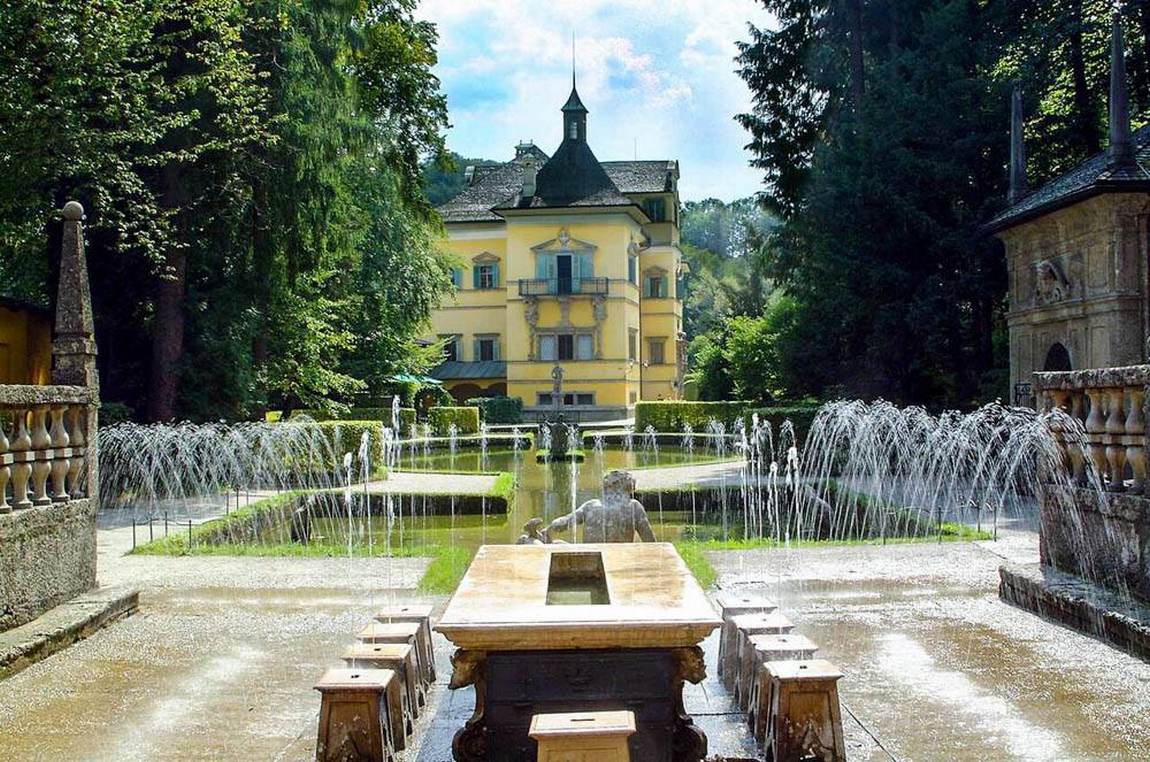
History of the palace
Some background information: Hellbrunn Palace and Park was once the summer residence of Archbishop Markus Sittikus of Hohenems. The nobleman commissioned the most skilled Italian architects to build him a magnificent palace and park with the most original fountains in the world. According to the architects, it embodies the best traditions of Italian Mannerism.
The palace was built in a very short time — only 7 years, from 1612 to 1619.
It was not by chance that the foot of the Hellebrunn hill was chosen for the construction of the palace. The ground here is very fertile and rich — a large number of underground springs fill the soil with life-giving moisture.

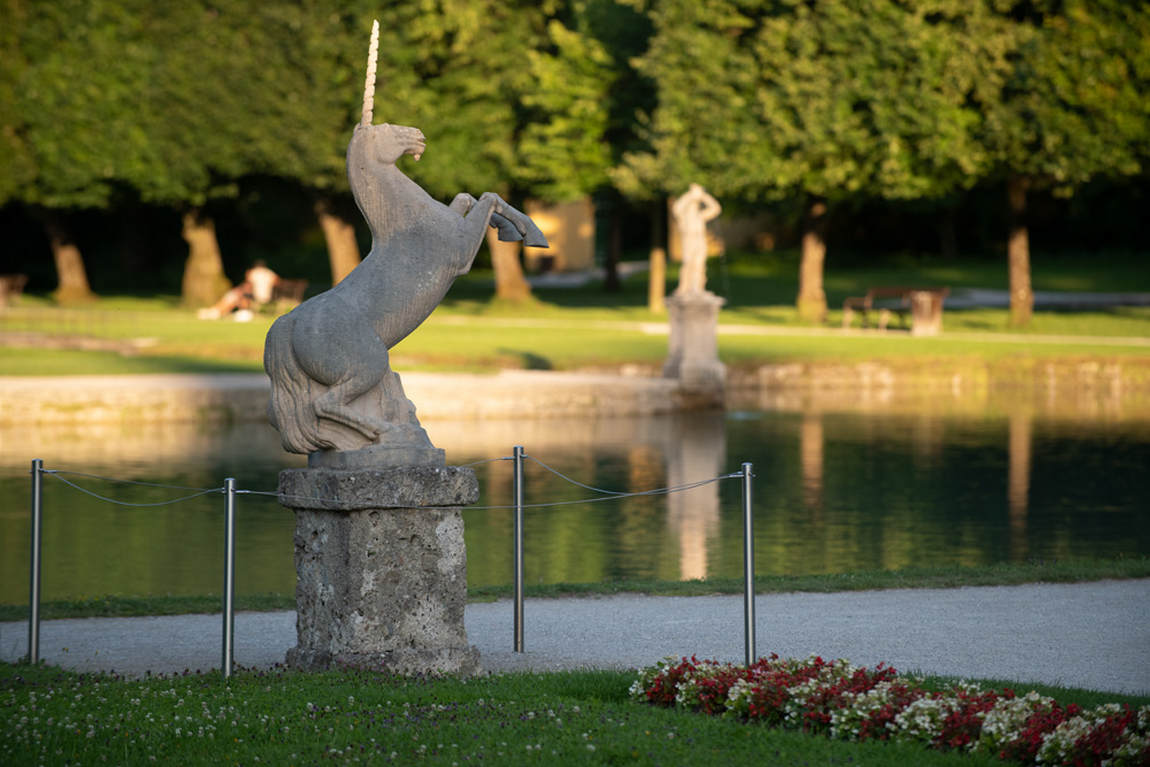
The interiors of Hellbrunn Castle
Today, the halls of the summer palace house an entire collection of local folk art. The fact that the palace has preserved its original furnishings, decorative elements and decorations is very interesting. Another unusual feature of the castle is the wall and ceiling frescoes that decorate the halls. Visitors to this architectural landmark of Salzburg are invited to learn about folk traditions and customs, medicine and culture of the time, as well as local crafts and national costumes.
Interesting fact. The Archbishop's chambers are rather basic. There are no sleeping quarters either, as Marcus Sitticus himself and all his heirs never slept in the palace, but only spent time in the grounds during the day.
The territory of the palace complex
As for the Hellbrunn park, it has been somewhat altered since the 18th century. Folk artisans renovated it, decorated it with statues of mythological heroes and gods and built the Stone Theatre, one of the most curious local attractions. The theatre is the oldest stage in Europe still working to the delight of the public. The Stone Theatre was first mentioned in 1617 when the first opera was performed. It is still used for performances today.
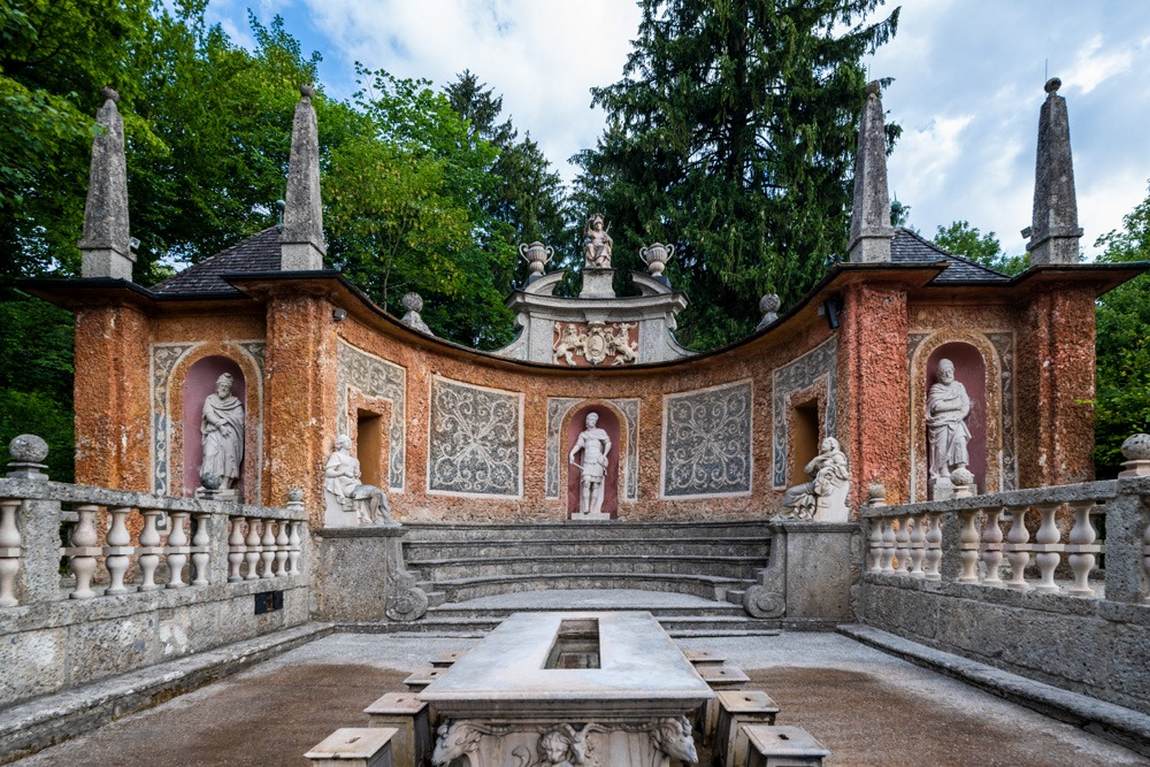
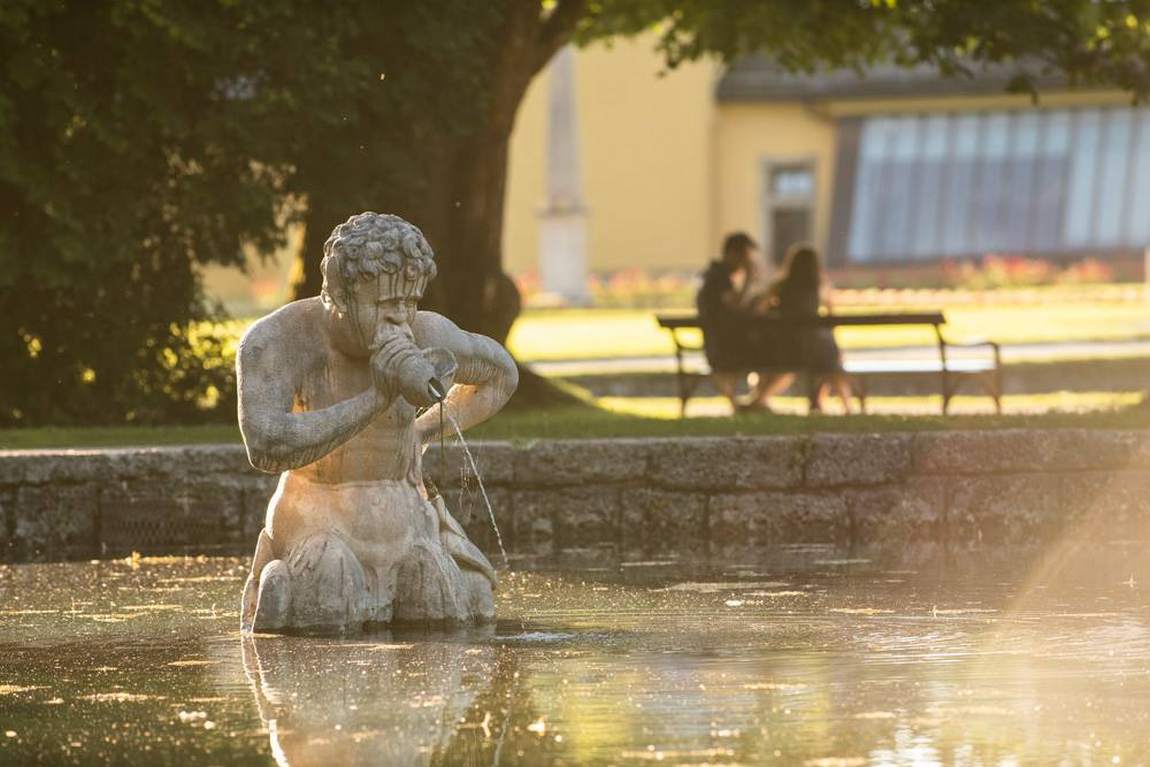
But the most unusual, interesting and fascinating thing about Hellbrunn Palace and Park is, of course, the water. In fact, this natural element is the main 'architect' of the park's landscape. Even the Stone Theatre is animated by a stream of water that plays an organ in the Melpomene Kingdom, and the atmospheric grottoes are astonishingly beautiful. Much effort, skill and imagination has gone into the park and its fountains, and they still delight visitors today. Walks through the park are marked by sudden effects: jokes, frightening sounds and noises, changes of light and shadow, etc.
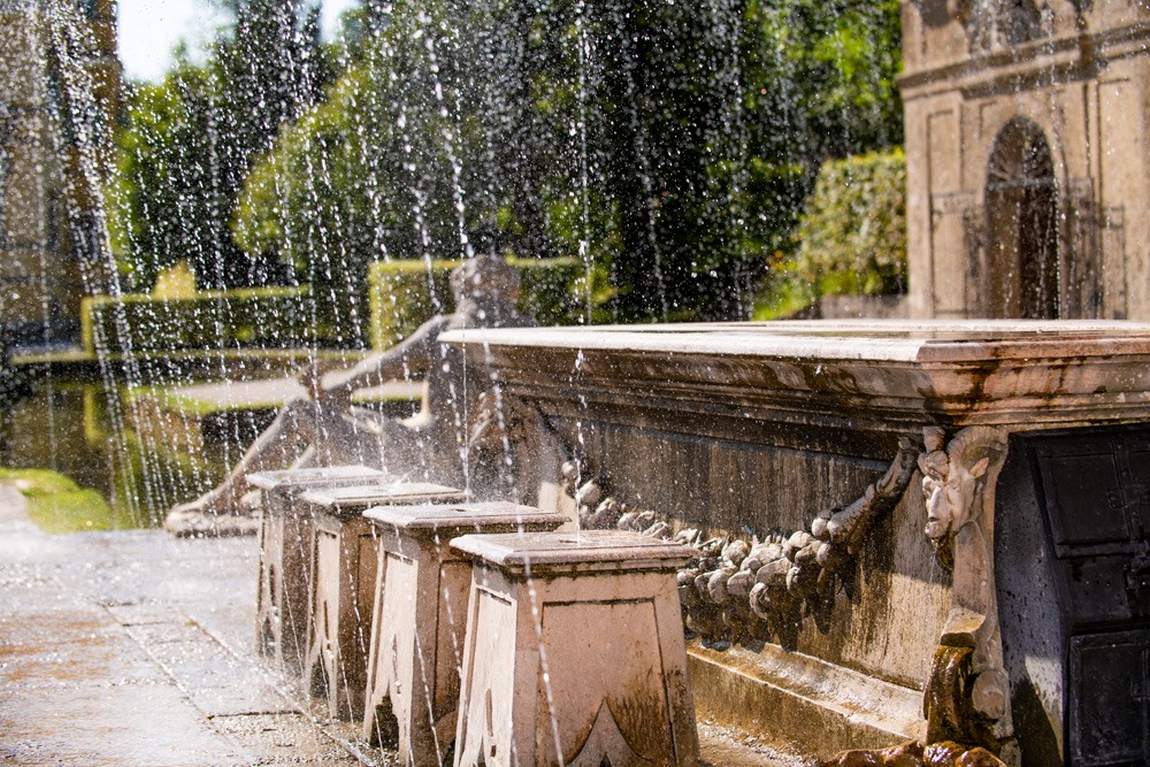
It's certainly not a place to be original. All the fountains in the park are hidden in the shade of trees and bushes, and water gushes out of the most unexpected places. Most of the fountains have remained in their original form since their construction in the 17th century. In the mysterious grottoes of Hellbrunn Park, the water splashes and plays with the help of special mechanisms. They also trigger the park's main attraction — the fountains on all sides of the palace, which spurt out at the most inopportune moment. It's worth noting that no other architect in the world has managed to replicate this water miracle!


